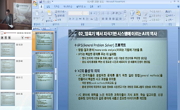Fuzzy Cognitive Map (FCM) and Bayesian Belief Network (BBN) are two major frameworks for modeling, representing and reasoning about causal knowledge. Despite their extensive use in causal knowledge engineering, there is no reported work which compares...
http://chineseinput.net/에서 pinyin(병음)방식으로 중국어를 변환할 수 있습니다.
변환된 중국어를 복사하여 사용하시면 됩니다.
- 中文 을 입력하시려면 zhongwen을 입력하시고 space를누르시면됩니다.
- 北京 을 입력하시려면 beijing을 입력하시고 space를 누르시면 됩니다.

Fuzzy Cognitive Map and Bayesian Belief Network for Causal Knowledge Engineering: A Comparative Study
한글로보기부가정보
다국어 초록 (Multilingual Abstract)
Fuzzy Cognitive Map (FCM) and Bayesian Belief Network (BBN) are two major frameworks for modeling, representing and reasoning about causal knowledge. Despite their extensive use in causal knowledge engineering, there is no reported work which compares their respective roles. This paper aims to fill the gap by providing a qualitative comparison of the two frameworks through a systematic analysis based on some inherent features of the frameworks. We proposed a set of comparison criteria which covers the entire process of causal knowledge engineering, including modeling, representation, and reasoning. These criteria are usability, expressiveness, reasoning capability, formality, and soundness. The results of comparison have revealed some important facts about the characteristics of FCM and BBN, which will help to determine how FCM and BBN should be used, with respect to each other, in causal knowledge engineering.
동일학술지(권/호) 다른 논문
-
- 한국정보처리학회
- 정광호
- 2008
- KCI등재
-
- 한국정보처리학회
- 이재성
- 2008
- KCI등재
-
- 한국정보처리학회
- 이종석
- 2008
- KCI등재
-
Fault Localization for Self-Managing Based on Bayesian Network
- 한국정보처리학회
- 박순선
- 2008
- KCI등재




 KCI
KCI




